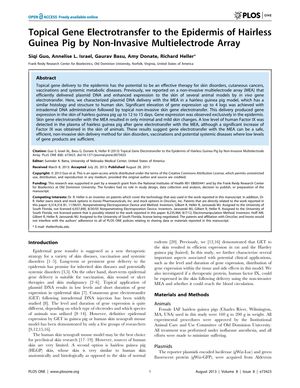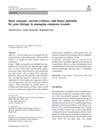Topical Gene Electrotransfer to the Epidermis of Hairless Guinea Pig by Non-Invasive Multielectrode Array
August 2013
in “
PLOS ONE
”

TLDR The method safely and efficiently delivers genes to the skin but may not work for conditions needing high levels of gene products.
In the 2013 study by Guo et al., researchers tested the use of a non-invasive multielectrode array (MEA) for gene electrotransfer (GET) to the epidermis of hairless guinea pigs. They found that this method significantly increased gene expression in the epidermis by up to four logs, which lasted for 12 to 15 days, with minimal and mild skin changes as side effects. Although only a low level of the gene product reached the systemic circulation, the method showed potential for treating skin disorders and systemic diseases that require low levels of gene products. The study also noted a 10.7% to 22.7% increase in body weight in treated guinea pigs, but due to the small sample size of 4 animals per group, further research with a larger sample size was recommended to confirm these findings. The study concluded that MEA-mediated GET is a safe and efficient approach for delivering genes to the skin, but may not be suitable for conditions needing high levels of gene products.



